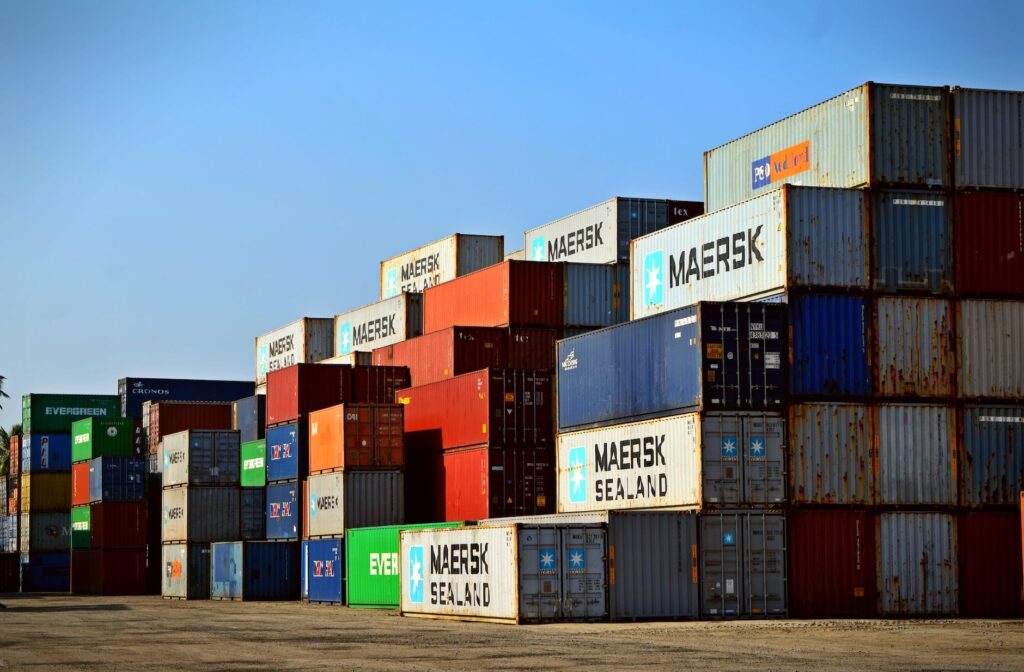Ever ordered something online only to be greeted by the dreaded “package in transit” message for days on end? You’re not alone! Tracking your shipment can feel like watching paint dry, leaving you wondering if it’s taking a scenic route across the globe or just chilling in a warehouse limbo. This, my friends, is the visibility challenge – a common foe in the world of supply chains.
Imagine your supply chain as a game of hide-and-seek with your precious cargo. Carriers, freight forwarders, and 3PLs (we’ll get to those cool cats later) are all involved in moving your goods, but sometimes, keeping track of them feels like searching for a needle in a haystack, blindfolded, with a mischievous toddler rearranging the furniture.
Partnering for Transparency for Carriers, Freight Forwarders and 3PLs
Fear not, fellow adventurers! Just like you wouldn’t attempt a real-life escape room alone (unless you’re secretly MacGyver), tackling supply chain visibility needs a squad. Enter your trusty logistics partners:
- Carriers: These are the muscle behind the movement, the trucks, trains, or even ships that physically haul your goods. Think of them as the Sherlocks of the group, with their tracking systems acting as magnifying glasses to pinpoint your shipment’s location. Some of the leading carriers in the world include FedEx, DHL, and Maersk.
- Freight Forwarders: These guys are the master organizers, handling the nitty-gritty details like customs clearance and documentation. They’re like the logistics Mary Poppins, pulling information and resources out of their bag of tricks to keep things smooth. A well-known example is C.H. Robinson, a global freight forwarder offering comprehensive logistics solutions. That is why Freight forwarders play a significant role in moving items across borders.
- 3PLs (Third-Party Logistics Providers): These are your one-stop shops for all things logistics, offering warehousing, packaging, and even fulfillment services. Think of them as the logistics Swiss Army knife, ready to tackle any visibility challenge that comes their way. A giant in the 3PL industry is XPO Logistics, providing a wide range of supply chain management services to companies of all sizes.

An Example of CJ Logistics (Centralized Platform for Shipment Tracking)
An international clothing retailer partners with a 3PL like CJ Logistics that provides a centralized platform for tracking shipments across their entire supply chain network, which spans over 20 countries. This allows them to monitor the movement of goods in real-time, from the moment they leave the factory in Asia to their arrival at stores in Europe and North America, with 99.5% accuracy.
3. Strategies for Enhanced Visibility: Tech Time and Teamwork Make the Dream Work
Okay, squad assembled, but how do we actually see what’s going on? Buckle up, because we’re diving into the world of:
Technology Solutions:
- Real-time tracking systems (GPS, RFID): Imagine tiny trackers on your shipments, like miniature location beacons broadcasting their whereabouts 24/7. That’s the magic of real-time tracking, giving you a constant stream of “where in the world is my stuff?” updates. Studies show that implementing real-time tracking systems can reduce on-time delivery failures by up to 30%.
- Integrating data platforms: Picture a central hub where information from all your logistics partners flows together, creating a single source of truth for your shipment journey. No more hunting through different websites and emails – just one platform to rule them all (or at least your supply chain visibility). Platforms like project44 and FreightWaves offer such functionalities.
- Data analytics: Remember that “big data” everyone talks about? It can be your secret weapon for analyzing trends, identifying potential delays, such as weather disruptions or port congestion at locations like the Port of Los Angeles, and making proactive decisions. Think of it as a crystal ball for your supply chain, offering a glimpse into the future (well, the near future of your shipment’s arrival, at least).
Collaboration and Communication:
- Clear communication protocols: Establish ground rules with your logistics partners. Think of it like setting expectations before a group project – everyone needs to know their role and how they’ll share information.
- Timely data sharing: No one likes a radio silence, especially when it comes to your shipment. Encourage your partners to use tools like automated alerts and notifications to keep you informed and in the loop.
- Collaborative platforms: Communication is key, and online platforms can be your virtual war room. Utilize tools like shared dashboards and messaging apps to facilitate smooth and transparent communication.
3. Strategies for Enhanced Visibility: Tech Time and Teamwork Make the Dream Work
Collaboration and Communication :
- Timely data sharing: No one likes a radio silence, especially when it comes to your shipment. Encourage your partners to use tools like automated alerts and notifications to keep you informed and in the loop. Setting clear Service Level Agreements (SLAs) with your partners can also help ensure timely communication and data sharing.
- Collaborative platforms: Communication is key, and online platforms can be your virtual war room. Utilize tools like shared dashboards and messaging apps like Slack to facilitate smooth and transparent communication.
Example of A Pharmacetical Company Shipping Medical Supplies
A pharmaceutical company utilizes a data analytics platform from a company like IBM to analyze historical shipment data and predict potential delays based on weather patterns and traffic congestion. This allows them to proactively reroute shipments, ensuring timely delivery of critical medical supplies, potentially saving millions of dollars in lost revenue and improving patient care outcomes.

4. Benefits of Increased Visibility: More Than Just Knowing Where Your Stuff Is
So, why go through all this trouble for better visibility? Well, the benefits are like finding a hidden treasure chest in your attic:
- Improved decision-making: With real-time information, you can react to potential delays proactively, reroute shipments if needed, and keep your customers happy (no more angry emails asking “where’s my order?!”). Studies show that companies with improved supply chain visibility can reduce transportation costs by up to 10%.
- Enhanced customer satisfaction: Nobody likes being left in the dark. Transparency builds trust and keeps your customers informed, leading to happier and more loyal fans of your brand. A study by Accenture found that 75% of customers are more likely to do business with a company that offers transparent and accurate order tracking information.
- Reduced costs: Delays can be costly, leading to lost sales, storage fees, and frustrated customers. Improved visibility helps you avoid these headaches and keeps your bottom line healthy. A study by Gartner estimates that poor supply chain visibility can cost companies up to 30% of their profits.
- Increased efficiency: Knowing where your shipments are at all times allows you to streamline operations, optimize inventory levels, and make better use of resources, potentially leading to increased productivity and efficiency gains of up to 20%.
5. Conclusion: Achieving Supply Chain Transparency – A Collaborative Effort
Improving your supply chain visibility isn’t about going it alone. By partnering with reliable carriers, freight forwarders, and 3PLs, and utilizing the latest technology and fostering open communication, you can create a transparency squad that empowers you to track your shipments with confidence, optimize your supply chain, and ultimately, delight your customers. Remember, a well-oiled supply chain is a happy supply chain, and a happy supply chain leads to a happy business!




